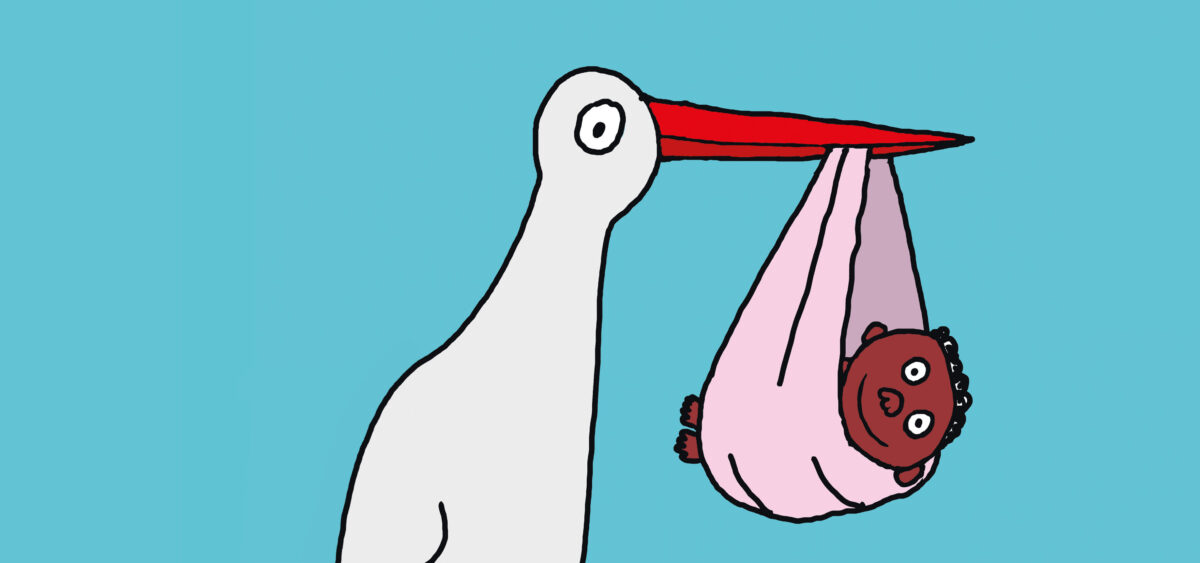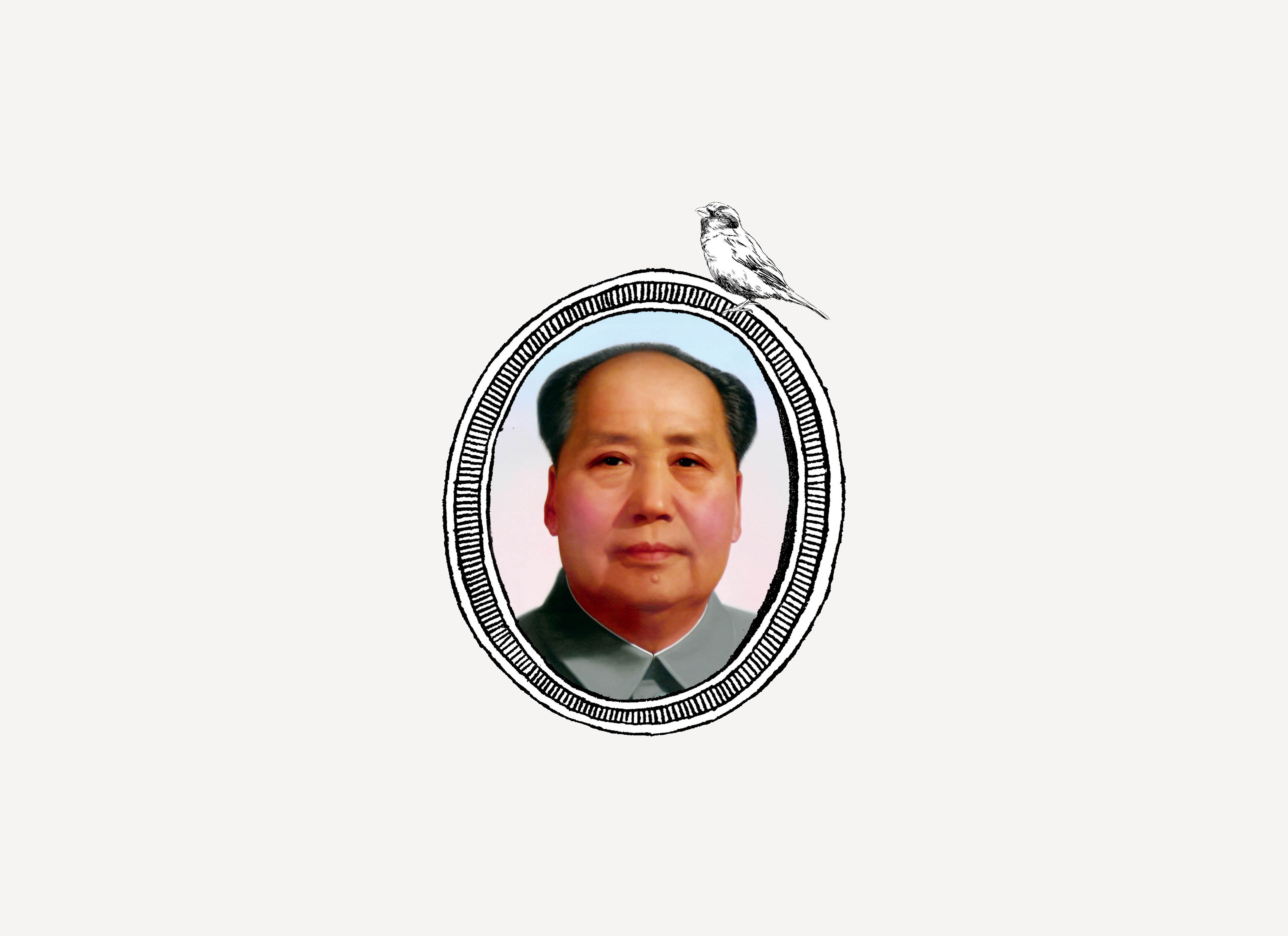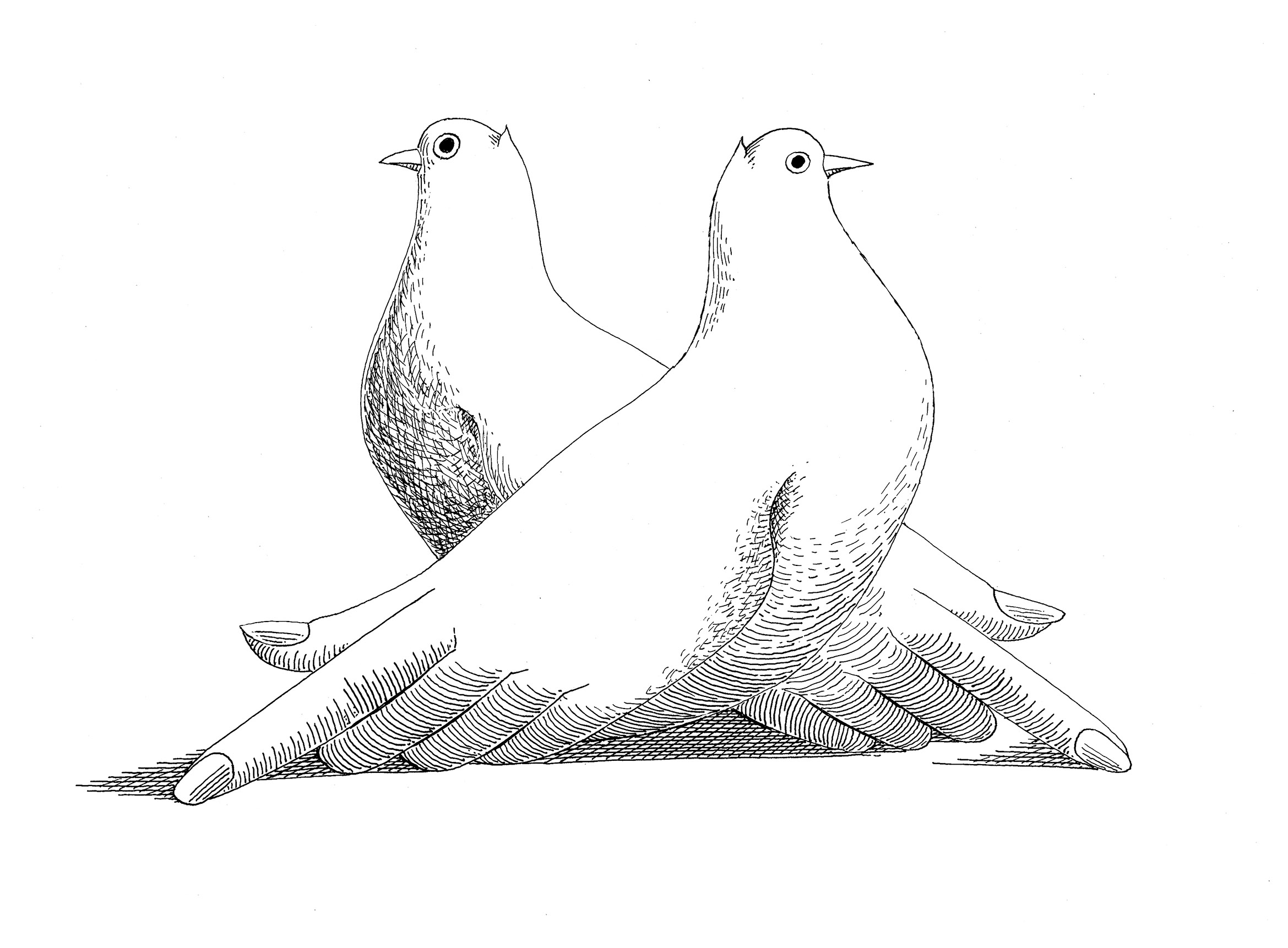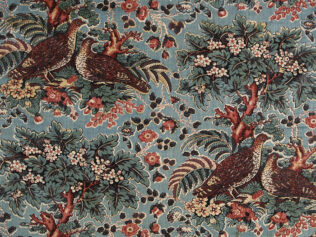
Stork spotting
I first spied a stork in Lithuania from the back of a bike. It was the dead of summer, a blazing hot July day cycling in the grassy countryside northwest of Vilnius. We were cycling up to Kernave for Midsummer’s Day celebrations, expecting bonfires, singing, sausages, and candles floating in the river. It was the type of hot, sunny day that drew out smatterings of wildlife here and there – a few cats, cranes, even a fox once. We kept to the forests where we could, crossing dirt paths and sandy roads. But sometimes the sand was too much, and drove us out onto a paved backroad with no trees in sight. A couple hours into the ride, we spied a telephone pole topped with a thicket. A nest. Catching a glimpse of a thin bird overhead, I pointed at the sky: “Gandras!” We watched it as it glided downward, silent, soon swallowed up by grassland.
The Ballads of Kukutis
“My, Vilnius is big!
At one end
A stork stands –
At the other
It claps its beak.”
So begins the Lithuanian poem “Kukutis’ Visit to Vilnius” by Marcelijus Martinaitis, in his bucolic Ballads of Kukutis. The longer I live in Lithuania, the more I see nature in everything. The emblem of Vilnius is an iron wolf. Other cities celebrate the auroch, moose and bear. As one local proverb goes: “If you run from a wolf, you may run into a bear.”
Since 1973, Lithuania has claimed the white stork as its national bird, a symbol of family, domestic life, birth and prosperity. As in many European cultures, the stork traditionally is said to bring babies into the household. The phrase “Gandras atnešė broliuką!” uttered by a midwife: “The stork brought a brother!” Even today, they’re said to bring harmony to families on whose property they nest. As we saw on that bicycle trip, many village homes still have old wagon wheels or poles in the hopes that a stork family will make it their nest.
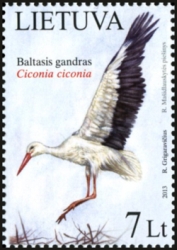
The first stork
The first stork I ever saw was among the ruins of an ancient settlement in the Moroccan capital, Rabat. Chellah is an old Muslim necropolis on the riverbanks of Oued Bou Regreg. Entering through the archway, you step back in time around sand-stained ramparts and royal tombs. Mementos from the Roman period, when the cluster of fortified walls and columns was known as Sala, still stand. Grass and dirt ravage the cracks between finely arabesque arches. Broken columns stretch upward like lilies to the sky. Above everything stands the 13th-century minaret, and atop that, a thick stork’s nest. Here, in this pocket of ruin, I spotted a small stork family, preening their feathers and ignoring me like the momentary visitor I was.
The nest
Whether you’re in Lithuania, Morocco, or the lake valleys of Lebanon, you might observe the unusual nesting behaviour of white storks. Ring-shaped thickets adorn roofs, upper canopies, utility poles, water towers. Stork settlers are usually helped by people loading their nest bases. The storks themselves carry quite large branches and adhere them with turf, clumps of hay, manure and so on.
Even as the fledglings hatch and grow, the parents keep adding to and repairing the nest. Not surprisingly, the resulting structure is often massive, which can wear the storms and strong winds. Leaving it for the winter migration, a stork might return to the same nest half a year later.
Malonus kaip mergai busilas
‘As agreeable as a stork to a maiden.’
Certainly, the shape of a stork is agreeable – when I imagine the bird in my mind, I think of elegance, grace. The eye follows a line of long, thin legs, upward to a long, thin neck and long, thin beak. Though called the ‘white stork’, this is a bit of a misnomer, as only his top half is white. The beak and legs are flushed red, and the tips of the wings are as black as ash. With beady, alien eyes he hunts for frogs, fish, earthworms. He likes to fly high in the sky, alternating between fluttering and falling. He hunts for food during the day, stalking around in wet meadows, puddles and pastures with feet and nails as flat as those of a man.
Ciconia ciconia – its scientific name sounds like a call. But a call is the one thing he doesn’t have. Curiously, he doesn’t have a syrinx, so bird watchers won’t have any luck recording its calls. As American humourist Will Cuppy said once: “The stork is voiceless because there is really nothing to say.” He can clatter his bills; he can hiss. The clatter of his bill sounds like a wooden toy.
The flying man
In 1884, German photographer Ottomar Anschütz published a collection of storks. The photos showed off their wide wingspan and playful instincts. With their stretched legs, they look something like ballet dancers taking a break in between rehearsals. It’s said that this photo collection inspired the design of “flying man” Otto Lilienthal’s experimental avian gliders.
As a young man, Otto and his brother Gustav would trek in the meadows outside their hometown of Anklam. They would see how close they could get to the storks, who have a poor sense of smell. They spent hours watching the flight and paths of the stork in the air, noting that it was the glide, not the beating of the wing, that in fact was the key to flight. Gliding on the air, the stork traveled vast distances with minimal effort.
Otto was so inspired that he published a book about avian aerodynamics decades later. With his brother, he channeled his passion into devising a new type of hang glider that relied on its pilot’s deftness in shifting weight to control roll and pitch. More than a decade before the Wright brothers, the Lilienthals experimented with flight in the hills outside the village of Derwitz. As Otto wrote: “We returned home, after these experiments, with the conviction that sailing flight was not the exclusive prerogative of birds.” Over five years, he made around 2000 flights before his untimely end, when one tragic day a gust of wind shook him off balance and he plummeted 50 feet below.
Storks in myth
The stork fable has long stood in place for the story of conception in Europe. The belief that storks carry babies dates back centuries, most probably from Slavic tradition. In early Slavic myth, the land of Vyraj was a garden that rested in the crown of the cosmic tree, just beyond an iron gate guarded by the god Veles. Birds flew to Vyraj in the winter and returned to Earth in the spring carrying human souls. Storks in particular would carry these souls to the womb of a pregnant woman. In Estonian, the stork is called toonekurg, derived from Toonela, the underworld.
But there’s evidence that the connection of storks with souls might be even older. In ancient Egypt, the stork was believed to represent the ba, the human soul. Even the hieroglyph for ba is a stork, its stalk-like legs planted firmly on the ground. Three storks together represent ‘power’. At night, the soul was known to fly away during sleep, but migrated home before dawn.
The belief of storks carrying babies was popularized in modern times by the 19th-century story “The Storks”, collected by folklorist Hans Christian Andersen. Storks found babies in caves or marshes and brought them to households in a basket or in their beaks. It became a common way for parents to explain newborns to their older siblings.
The pious bird
It’s no coincidence that storks are often associated with family. The Hebrew word for stork, chasidah, has connotations with a ‘kind mother’. The name in English derives from the Greek word storge, or ‘familial love’. Many ancient naturalists observed that the parents take care of the young almost to a fault. One noted that a stork pair will be consumed with a nest in a fire rather than abandon it.
This care went both ways, meaning the young would also take care of their elders. As reported by The Guardian, a 19th-century monthly magazine about Christianity, by one Danish observer of the migration in 1854: “It is not uncommon to see several of the old birds, which are tired and feeble with long flight, supported at times on the backs of the young; and […] when they return to their homes, laid carefully in the old nest and cherished by the young ones which they reared with so much care the spring before.”
For early Christians, the stork became an emblem of a chaste marriage, appearing well into the 17th century as in Henry Peacham’s book Minerva Britanna. Romans called it the avis pia, the pious bird, and later in the Renaissance, avis piissima. Inspired, 16th-century dramatist Francis Beaumont penned this particular poem about the bird:
“The stork’s an emblem of true piety;
Because, when age has seized and made his dame
Unfit for flight, the grateful young one takes
His mother on his back, provides her food,
Repaying thus her tender care of him,
Ere he was fit to fly.”
Geography of a bird
Maybe the stork has become such a natural symbol of Lithuania because of the sheer number there is to be found here. Around 20,000 breeding pairs cluster in Lithuania over the summer. That’s about 8.4% of the world’s entire population – the densest in Europe. Mostly they keep to remote villages, Aukstaitija National Park and littoral pockets in the West.
Lithuanians call the stork gandras, a masculine word. It likely comes from the same root as Old English gandra, or male goose, from the Proto-Indo-European ghans-, meaning ‘goose’. But wherever you go in Lithuania, the stork has different names: busilu, starkumi, gužu, gužučiu, bacionu, and, in the Samogitian language in the west, gožos.
The stork and the seasons
The stork is all about the seasons.
Spring – the arrival. The white stork flocks northward into Lithuania. Tradition has it that around 25th March, a day known as Gandrinės or Blovieščiai, the storks fly in, heralding the coming of spring. At the sight of storks, farmers stir their planting seeds, light straw fires and hang gifts for children – fruit, chocolates, pencils, dyed eggs – on tree branches and fences. Supposedly, on this day snakes come out of their burrows. Catch a snake and bury it under your doorstep for good luck.
In pagan times, Lithuanian tribes would celebrate the new year around this day. The first sight of a stork determined the fate of the year ahead. If the stork was flying, the year would be fruitful, students would pass exams and unmarried girls would find husbands. If the stork was on the ground, however, the year would be full of ill fate.
Summer – the peak time for family. Storks find a mate, build a nest, and raise their young. They live in the wilds or villages, on top of roofs or telephone poles, waiting for the great migration. Adults take out the juveniles and flock to farms to teach them how to fly and hunt. They catch insects, mice, lizards and worms disturbed by daily farm work.
Autumn – the departure. According to Lithuanian popular tradition, storks start migrating southward on St. Bartholomew’s Day, 24th August. Though not exact timekeepers, they more or less keep to this schedule. The regularity with which the storks embark on their journey is almost legendary. Even the Scriptures say: “Yea, the stork in the Heaven / Knoweth her appointed time” (Jeremiah 8:7).
The birds gather together from all across one region before heading south. First, they collect together in a mass flock, the seimas. Then it’s time to take off to the skies – but not everyone. The sick, weak or injured among them stay behind, unable to make the journey. They’ll be forced to winter in the northern climes, seeking shelter in a barn. As one Lithuanian saying goes: “You walk like a stork after St. Bartholomew’s.”
Onward and southward
Once they hit the horizon, their journey has just begun. The storks spiral up to altitudes as high as 1500 metres, allowing them to cross great distances in just a few weeks. Following the air currents from as far north as Estonia, they make their way down south, over the Carpathian Mountains, through Bulgaria, the Bosphorus, Lebanon, down into the Nile river valley and further south, deep into Africa. They cross into the deserts and grasslands of Ethiopia, Somalia, Sudan, Botswana. They flock to join their smaller, endemic cousins: Abdim’s stork, the open-billed stork and the woolly-necked stork. In these regions, they bring with them the dry season, and for many people, their coming is an ill omen. Altogether it can take around two to three months to cross eight to ten thousand kilometres.
Most of these birds will venture all the way down to South Africa, which in October turns to spring and the rainy season. There, the white storks go by many different names: ingwamza, ingwangwane, umgodoziya. In Zululand, they’re known as unogolantethe, the ‘grasshopper-catcher’. In South African folklore, we find a close association with womanhood and fertility, like with their fellow water birds, the white egrets and cranes. This might have to do with their proximity to water, and their arrival that coincides with spring and the breeding season. Water birds, after all, produce more eggs than other kinds of birds. According to one story, in North Sotho (in northeastern South Africa), the ashes of a stork were mixed with an ointment and rubbed on infants to protect against disease and help with fusion of the cranial bones.
Because the wind currents need to be so exact, the migratory route is fairly regular from year to year. There are a few dangers on the way. Weakened birds may collide with power lines. A few locations become narrow bottleneck points, which, unfortunately, make them prime targets for poaching. One of the worst locations where they are funneled is Lake Qaraoun in Lebanon’s Beqaa Valley. Around 20,000 birds migrate here annually, including raptors, storks and pelicans, but thousands don’t make it out alive due to illegal hunting. Every migration season, hunters take advantage of this bottleneck to instigate a mass slaughter of birds.
Curiously, the white stork helped scientists discover the phenomenon of bird migration. In the early 19th century, such knowledge was unknown. People believed that birds hibernated or even turned into mice over the winter. But in 1822, near the German village of Klütz, townsfolk spotted a stork with an arrow in its neck – a type of arrow that was only found in Africa. And it wasn’t the first to be found. The Germans called these storks Pfeilstorch, or arrow storks.
Winter in the Middle East, and beyond
This wild migration has been around for millennia, older than human memory. As you may have noted earlier, the stork is not an uncommon character even in Biblical scriptures, observed in droves near Aleppo and Seville. At Baghdad, hundreds were said to be seen about the houses, walls and trees.
As 19th-century Christian monthly The Guardian reported: “These birds are very numerous in the Holy Land… between Cana and Nazareth are covered with numerous flocks of them, each flock containing more than a thousand. In some parts the ground is entirely whitened by them; and, on the wing, they darken the air like congeries of clouds.” As the roof of houses were commonly flat, they were often seen on top of pine trees. At Persepolis or Chilmanar in Iran, the remains of each and every pillar had a nest on it. From atop the utility poles of Lithuania, or the ruined columns of Persia, storks seem to inspire the explorer instinct wherever they go.
“Who bids the stork, Columbus-like, explore
Heavens not its own. and worlds unknown before;
Who calls the council, states the certain day.
Who forms the phalanx, and who points the way?”
– Alexander Pope


